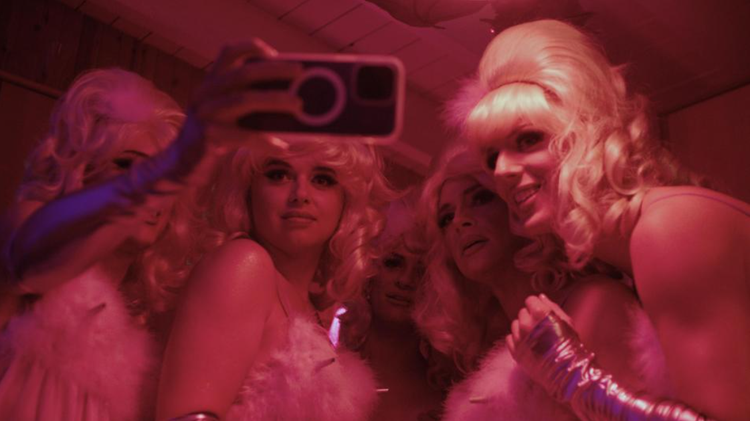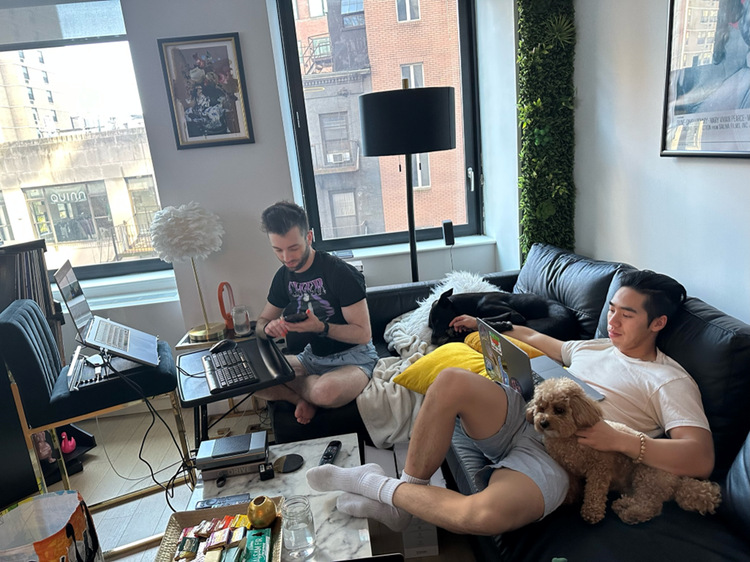Editing SXSW film “A House Is Not A Disco” using Premiere Pro with Blake Pruitt

Debuting at this year’s SXSW, “A House Is Not A Disco” presents a vibrant narrative documenting a year-in-the-life in the world’s most iconic “homo-normative” community: Fire Island Pines. Located just fifty miles from New York City, this cherished queer beach town finds itself in the midst of a renaissance led by a new generation of Millennial homeowners who are reshaping The Pines for a more inclusive future.
Editor Blake Pruitt used Premiere Pro to help them save countless hours during the post-production process. Specifically, the Speech to Text feature in Premiere Pro offered them a smoother editing workflow by allowing quick and easy keyword searches for this documentary.
“A House Is Not A Disco” premiered at SXSW on March 8. Keep reading for more behind the scenes insights.
How and where did you first learn to edit?
I first taught myself to edit [...] in middle school. I would make my friends and family appear in my films and use every school project as an opportunity to make a movie.
How do you begin a project/set up your workspace?
Working as an assistant editor on a wide range of projects (documentary, narrative, studio, independent) has taught me that it really depends on the project. Working backwards from how you’ll be finishing/doing turnovers and making sure everything is organized in a way that streamlines that process is definitely the best strategy. I also like color-coding different media types so I can easily see in a timeline what’s archival footage, source footage, score, sound effects, etc.
Tell us about a favorite scene or moment from this project and why it stands out to you.
My favorite scene in this project is a breakaway moment we spend with a character named Schuyler in the middle of a larger sequence. He’s working on his flamingo sculptures and musing on the music at parties in the Pines, climate change, and the patterns of human behavior. It’s the mix of the most ordinary, conversational thoughts with these profound observations as he’s constructing flamingo art pieces that really gets me. I think it’s funny, bittersweet, and heartfelt and also feels like an embodiment of this character in scene form.
What were some specific post-production challenges you faced that were unique to your project? How did you go about solving them?
We had a LOT of footage, which isn’t necessarily unique to this project, but having paper outlines with timecodes and selects helped enormously. Our director had scene outlines and character outlines that directly referenced the footage, so when I was starting a scene, I had something to work with — not just hours and hours of footage sitting in front of me.
What Adobe tools did you use on this project and why did you originally choose them? Were there any other third party tools that helped enhance your workflow?
The Premiere Pro auto transcription tool (Speech to Text) saved us countless hours of work on this. It’s so useful on a documentary to be able to search by keywords and interview bites. And the ability to have multiple photo and video formats in the timeline from our many different cameras and archival sources was crucial.
If you could share one tip about Premiere Pro, what would it be?
Use Speech to Text! It saves so much time to have a live transcript and comes in handy if you need captions later.
Who is your creative inspiration and why?
Brian Kates is my editing mentor and inspiration. He’s built a career working in narrative film, documentaries, and television and has won two Emmys. I’ve had the pleasure of apprenticing and assistant editing for him. He’s not only a brilliant editor but a generous mentor and teacher.
What’s the toughest thing you’ve had to face in your career and how did you overcome it? What advice do you have for aspiring filmmakers or content creators?
In some ways tough but in some ways easy: saying “no” to Post Coordinator jobs in order to pivot to an apprentice editor job that allowed me to join the Editors Guild and shift to the editorial side of post production. The advice I’d give is to take the work you can get when you can get it, but also know what you’re ultimately trying to do and make sure the people around you know as well. We can all help each other out, but only if we know the best way to help.
Share a photo of where you work. What’s your favorite thing about your workspace and why?
This was the workspace for most of this project — my couch with multiple gays and dogs.
